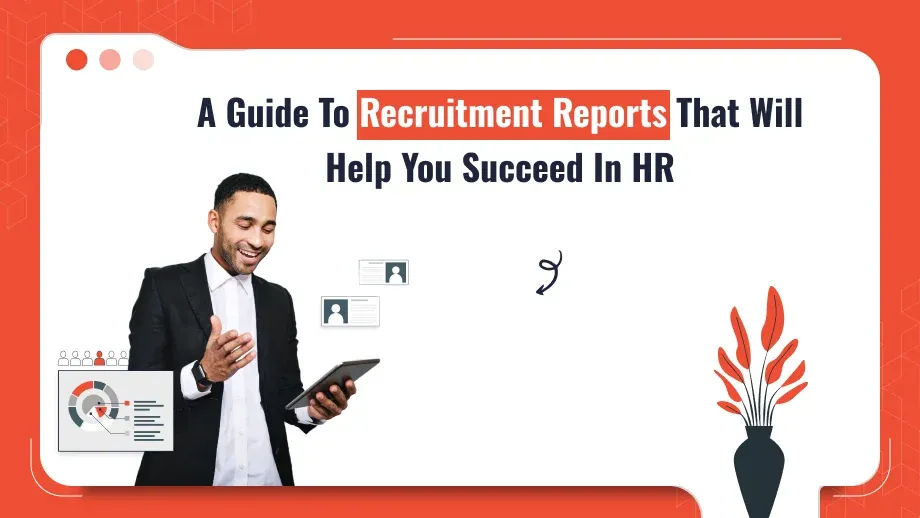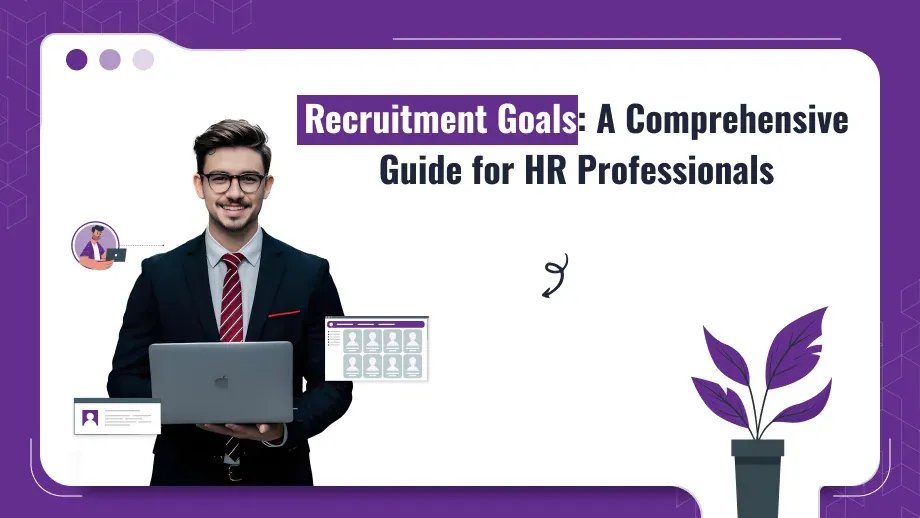
Recruitment is the soul of any business and a good recruitment report can give you an edge in your hiring process. A well-prepared recruitment activity report permits HR groups, directors, and executives to see how their recruitment procedures are working, spot the crevices, and make informed decisions to move forward with future results. In this direct we will see at what recruitment activity reports are, the benefits, key metrics, and illustrations to help you produce great reports for your trade. Whether you are an HR professional, recruitment manager, or executive this direct will help you get to grasp the data to make recruitment more efficient.
What is a Recruitment Report?
A recruitment action report is a report that abridges an organization’s enrollment action. It helps to track recruitment activity, survey the quality of hire, and identify areas for improvement. This report is used to present key metrics like time-to-hire, cost-per-hire, and candidate quality to management teams.
A recruitment activity report to management is basic to align hiring with trade goals. It gives a data-driven see of how recruitment is meeting organizational needs and makes a difference in administration with strategic planning. It helps make evidence-based choices to diminish enlisting costs, improve talent acquisition quality, and adjust the recruitment process with the overall business strategy.
What Are the Benefits of a Recruitment Activity Report?
Recruitment reporting provides a few benefits to progress the hiring preparation and get way better results:
Better Choice Making: Recruitment report provide HR groups and management insight into different aspects of hiring so they can make way better, data-driven decisions.
Identify Gaps: These reports appear where the recruitment preparation is wasteful so HR professionals can make adjustments and streamline.
Cost Effectiveness: A recruitment process report will regularly include cost-per-hire measurements so you can see if your enrollment action is cost-effective or needs budget adjustments.
Quality of Hire: By analyzing the recruitment activity report you can see which channels are producing high-quality candidates and center on those.
Compliance: Recruitment activity reports help you remain compliant with hiring laws and regulations which is trade critical.
Transparency: Recruitment activity reports bring transparency to the hiring process so partners can see the advancement and efficiency of recruitment campaigns.
Candidate Experience: By tracking metrics like time-to-hire and candidate input it will show you where to improve the overall candidate experience.
Alignment to Business Goals: A recruitment activity report to management ensures hiring is adjusted with the overall business goals so HR can contribute to general victory.
8 Reports to Have on Your Recruiting Dashboard
To track and improve your hiring process you need a recruitment dashboard. Here are 8 reports to include in your recruitment report:
Time-to-Hire Report
This report shows the average time it takes to fill a part from work posting to candidate acceptance. By seeing how long it takes to contract you can spot where the handle is slowing down and see to speed it up.
Source of Hire Report
This report shows you where to find the best quality candidates. By seeing which platforms (e.g. job boards, Talent management systems, referrals) are producing the best candidates you can focus your efforts and budget where it matters most.
Cost-per-Hire Report
This report shows the financial cost of hiring from advertising job postings to onboarding new starters. Knowing cost-per-hire helps you optimize recruitment spend and find cost savings.
Candidate Quality Report
This recruitment and selection report measures the performance of hires, their fit, and long-term with the company. It’s basic for measuring the quality of your recruitment efforts.
Diversity Report
Diversity hiring is a goal for many organizations. A diversity report helps you degree your recruitment pipeline for gender, ethnicity, and background differences so you can see if your hiring practices are aligned with your different goals.
Offer Acceptance Rate Report
This recruitment report example shows the ratio of offers extended to candidates versus accepted. It helps you see how alluring your offers are and if you require to adjust them to make them more appealing.
Retention Rate Report
This report shows how long modern starters remain with the company after joining. If retention rates are low it may be a problem with the hiring process, onboarding, or culture fit.
Recruitment Funnel Report
Seeing where candidates drop off in the hiring funnel (from application to final hire) can help recruiters see where to improve conversion rates.
Transform your hiring practices with our detailed recruitment reports.
Uncover valuable insights to improve candidate sourcing and streamline your recruitment pipeline.
How to Write a Recruitment Report: Example
Follow these steps to make sure your report is actionable:
What’s the Objective
Start by telling management what your recruitment activity report is about. Are you reporting on a specific hiring campaign, candidate quality from certain sources, or cost metrics?
Gather Data
Get data from your Applicant Tracking System (ATS), recruitment dashboards, and other sources. Data such as candidate flow, time-to-hire, cost-per-hire, and candidate demographics are key.
Analyze the Data
Interpret the data to get insights. For example, if the recruitment activity report shows most candidates are coming from worksheets but retention rates are moo you might be required to re-evaluate your sourcing strategy.
Format the Report
A clear format is important so the report is easy to understand for stakeholders. Here’s an outline for a recruitment process report:
- Introduction: State what the report is about.
- Measurements Overview: Appear key metrics such as time-to-hire, source of hire, and cost-per-hire.
- Data Insights: Analyse the metrics and what they cruel for recruitment.
- Recommendations: Suggest actions to improve recruitment.
Use Visuals
Graphs and tables can help make data more digestible. Use visuals to show trends and comparisons e.g. offer acceptance rates or candidate pool diversity.
End with Actions
Summarise the key points and suggest what to do next. For example, you may recommend more budget for Real-Time Feedback tools to improve the candidate experience.
Recruitment Report for Management
A recruitment report to management is not fair approximately numbers – it’s a strategic tool that gives you important bits of knowledge into the wellbeing of the hiring handle. Showing the enrollment pipeline, time-to-hire, and quality of hire empowers management to make data-driven choices that adjust with the commerce goals.
Recruitment report also show which channels are performing well, which parts are hardest to fill, and how recruitment activity aligns with trade needs. For case, if an enlistment movement report appears certain parts take longer to fill it may cruel you need to improve outreach or change job descriptions.
Recruitment Activity Report Example
You are preparing a recruitment report for software developers. In this report, you may want to include:
- Time-to-Hire: 45 days to hire software developers.
- Source of Enlist: 60% of fruitful candidates were from LinkedIn, and 25% were from worker referrals.
- Cost-per-Hire: $4,500 including advertising and onboarding costs.
- Offer Acceptance Rate: 80% of offers expanded were accepted so the compensation package was competitive.
By showing these metrics in a report management can see how the recruitment process is performing, identify regions to improve, and make key choices to get better outcomes.
Using Recruitment Report for Continuous Improvement
Recruitment reporting is not a one-off – it ought to be part of a continuous change cycle. By checking on recruitment and choice reports regularly HR teams can:
- Identify Trends: See seasonal trends in hiring and planning.
- Improve Processes: Refine job descriptions, interview process, and sourcing strategies.
- Align to Business Growth: Ensure recruitment activity aligns with upcoming projects and business expansion.
- Enhance Employee Experience: Use employee feedback management tools to gather insights from candidates and improve their experience throughout the hiring journey.
Compliance and Recruitment Reporting
An often overlooked benefit of recruitment reports is compliance training for employees and regulatory standards in the hiring process. It can show adherence to rise to opportunity directions, track diversity metrics, and ensure the company is following best hones for reasonable hiring.
For case, compliance reports can appear if enlisting practices are inadvertently barring certain groups or if alterations are required to be made to meet the diversity objectives of the organization. These reports also help to relieve legal risks and illustrate the company’s commitment to fair employment practices.
Recruitment Report Best Practices
Here are a few best practices to consider when creating a recruitment process report:
- Automate When You Can: Use an Applicant Tracking System to collect data and generate reports automatically, save time, and reduce the chance of human error.
- Keep It Important: Tailor your recruitment report to your audience. A recruitment report to the administration ought to be high-level, whereas reports for recruiters can be more detailed.
- Highlight the Key Metrics: Center on the metrics that matter most to your audience, e.g. time-to-hire, cost-per-hire, quality of hire.
- Visualise: Utilize charts, charts, and tables to make the data more understandable and lock in for partners.
Summary
Recruitment report are a powerful tool to improve the enlisting handle, diminish costs, and get superior quality contracts. From time-to-hire to cost efficiency these reports deliver you actionable insights that advantage the entirety organization. To get the most out of your its make sure they are well-structured, data-driven, and aligned to the needs of your HR group and the wider business.
Whether you need to optimize your recruitment pipeline, improve the candidate experience, or adjust hiring to business objectives, This is the outline to get there. Enlistment is all approximately making informed decisions and it gives you the information to do fair that.





